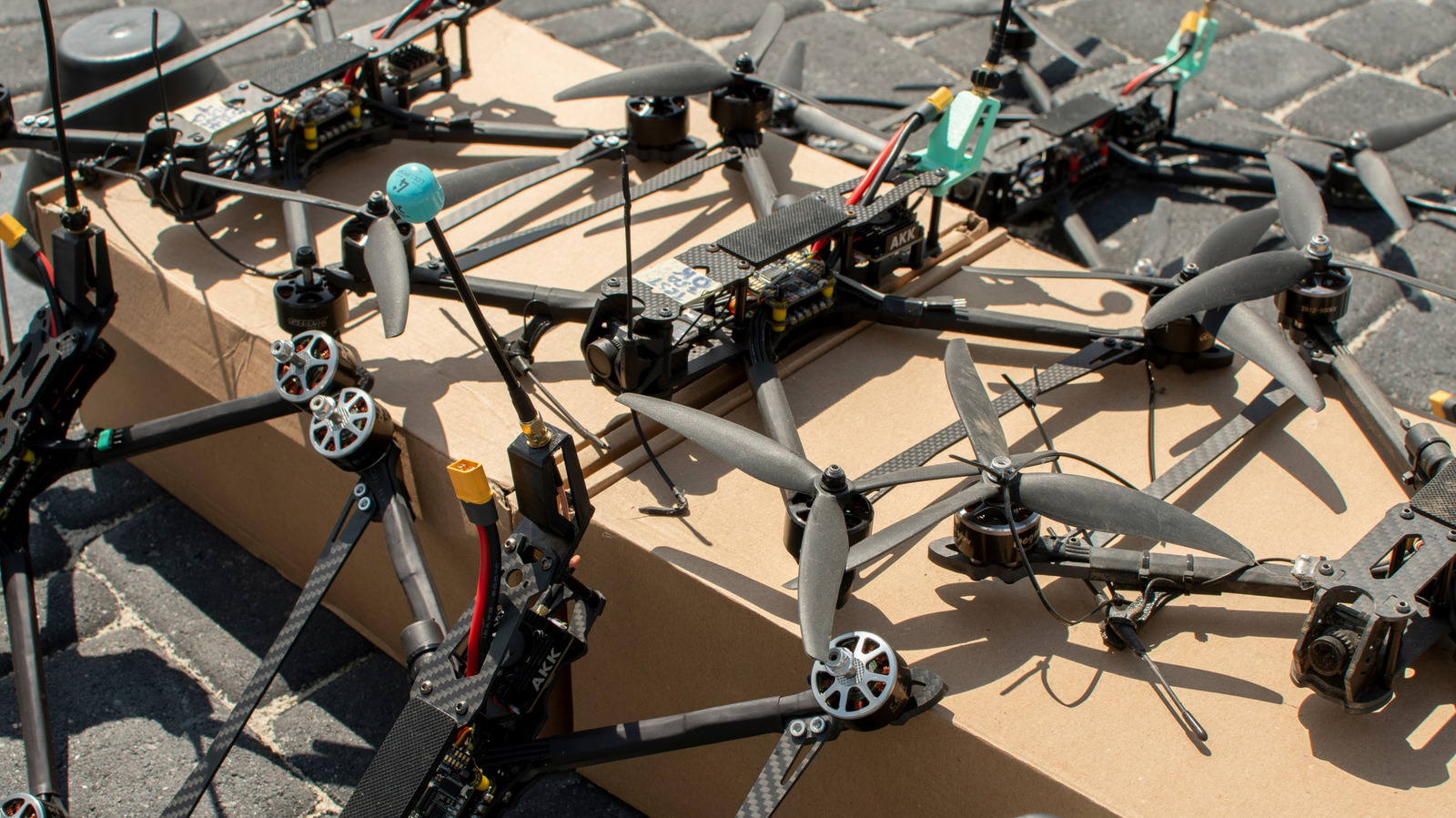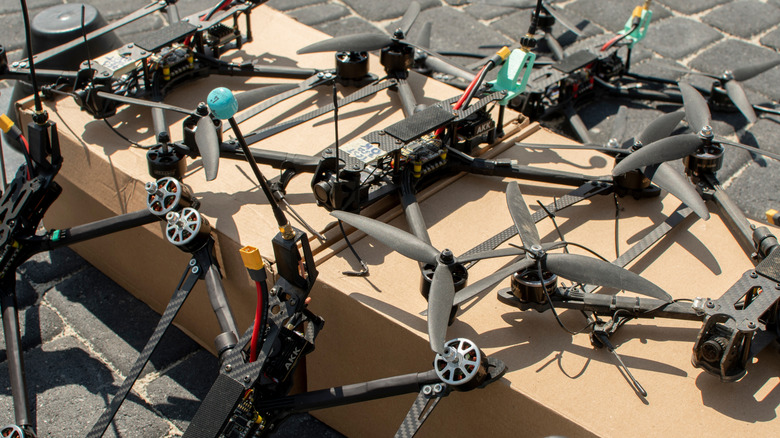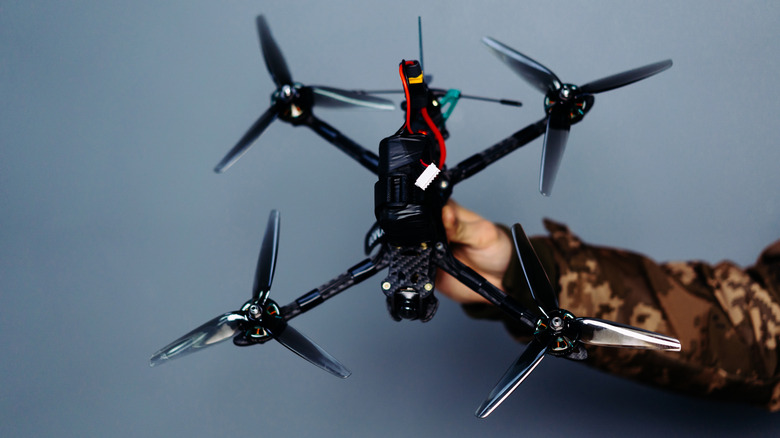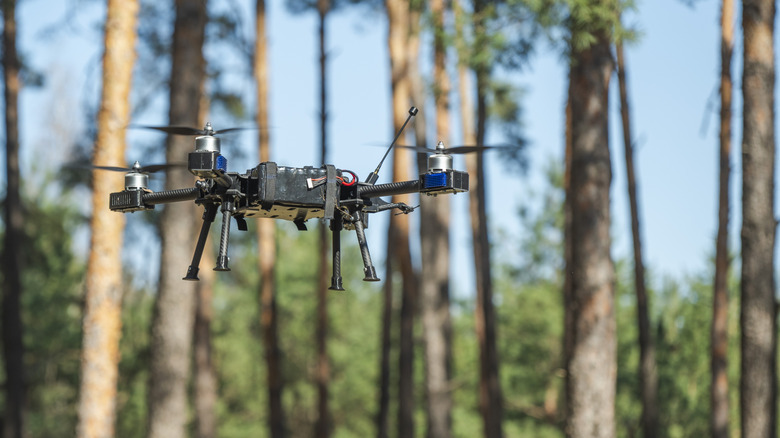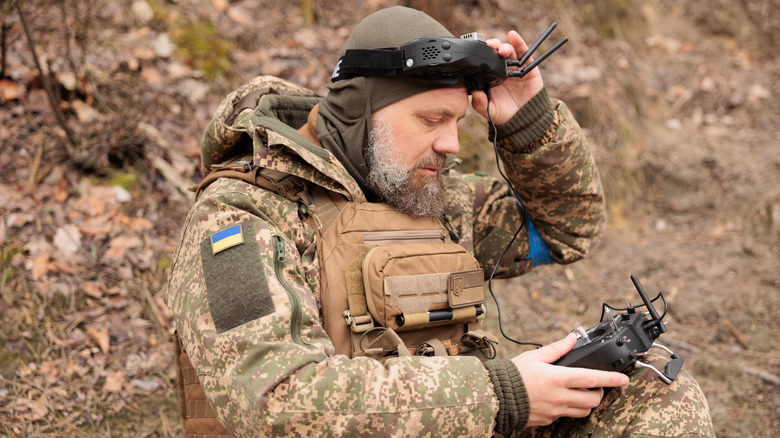For a few years now, and particularly since the full-scale Russian invasion of Ukraine in 2022, conventional wisdom has said that the future of warfare is swarms of cheap drones with explosives strapped to them. But now, over on War on the Rocks, a veteran of a Ukrainian drone unit is pointing out the shortcomings of cheap drones as a strike asset — and predicting that they might play much less of a role than more traditional fires.
Jakub Jajcay is a Slovakian military veteran who volunteered to serve in an FPV drone unit in Ukraine. In short, he wasn’t super impressed by what he saw. Specifically, these cheap little quadcopters, operated using VR goggles to see exactly what the drone sees, were incredibly fragile. They suffered from frequent part failures, were susceptible to electronic warfare and jamming, and if so much as a big tree got in the way, they could lose radio signal with the operator. Plus, they really can only fly in perfect weather in daylight, so a little rain or just plain nightfall would ground them.
So even though FPV drones are inflicting a lot of casualties, once you run the math (as Jajcay did), their strike missions only have a total success rate of around 20-30%. A military can’t succeed if it only does what it needs to do one-fifth of the time. Jajcay’s overall point is that this asset simply isn’t in a place to take over for more tried and true strike capabilities.
The limits of cheap drones
Ukraine’s daring Operation Spiderweb, in which the country’s covert forces smuggled a bunch of FPV drones deep into Russia and successfully struck a huge portion of the invader’s strategic bomber fleet, seemed to showcase how a couple of off-the-shelf quadcopters could knock out some of the most expensive planes in an air force. That raises some hard questions. Why should a country spend hundreds of millions of dollars on giant bombers when a drone costs $500?
The short answer is: Because you get what you paid for. At that price, an FPV drone won’t have GPS, navigational aids, or night vision (which is useful in a country where the winters are dark for 14 hours, like, say, Ukraine). That means the operator has to navigate via visible landmarks, a strange blend of World War II-era techniques with ultra-modern aircraft. It also means the drones are limited to flying in the day, and again, only if the weather is perfect.
Could you get drones with all that stuff? Sure, but then you’re doubling or even tripling the price, at which point you’re cutting against the drones’ main value proposition, that they’re cheap. Going the other way, militaries already have access to an even cheaper option: Mortar shells, at around $100 a pop. Mortars, essentially hand-portable mini-artillery, have been in use for decades and are a tried and true fire. In other words, as Jajcay lays out, FPV drones have to argue that they’re better than mortars, and, well, maybe they’re not.
Maintaining contact
FPV drones were designed more for hobby racing than warfare, so in a lot of ways, they’re not well suited to the task. As mentioned above, if any objects (trees, hills, etc.) get between the operator and the drone, radio contact is lost. Generally, there are a lot of hills and trees in war. Even across a level plain, the max radio range is around 10km, which isn’t terribly far in military terms. In Operation Spiderweb, the operators actually used a Russian cell phone service instead of radio.
Worse, in the three years since the full-scale invasion began, Russia’s electronic warfare program has gotten a lot more sophisticated. When Russian EW is in effect, drones simply fall out of the sky. In fact, even when it’s the Ukrainians themselves putting EW into effect, drones fall out of the sky — even their own. So if Ukraine is defending its positions against an incoming Russian threat, it actually cuts off its own ability to send out drones. Pretty limiting.
Technology is improving on this front, though. For one thing, as Euromaidan Press reports, signal jammers only jam a narrow radio band, so if you fly drones using a wide variety of bands, any one jammer will only knock some of them out. Russia has already started using this tactic. For another, there’s a way to simply avoid the radio issue altogether: Connect to the drone via a 6.2-mile-long fiber-optic cable. You can’t jam what’s hardwired in! However, the cable makes the drone cumbersome to fly, and of course if the cable ever snags on anything, it’s all over anyway. Plus, all that cable is expensive. The Russians, though, seem to be making increasing use of this tech, to devastating effect.
Strike capabilities
Operation Spiderweb was an astonishing success, dealing damage to a whopping 34% of Russia’s entire strategic bomber fleet. The flip side was that it took eighteen months of careful planning to pull off. So even though the operation proved that expensive assets could be put at risk by cheap ones, there’s no way a military can function if it takes a year and a half to strike anything. Even at the tactical level, a typical FPV drone strike takes about 15 minutes to fly. By contrast, a mortar team can start hitting its target in about five.
FPV drones, then, are something of a slow fire. And when all is said and done, what exactly are they doing? As Jajcay points out, most drone strikes are flown against targets that were already damaged by something else. In other words, drones are used as the finishing blow, not the first hit. The number of missions where the drone was the primary fire? Less than 10%. They just aren’t at a place to replace other capabilities yet.
That said, via Euromaidan Press, Ukraine’s Senior Lieutenant Ihor Shutyi, an EW officer, believes that drones are rapidly getting more sophisticated, particularly as new technologies get around jamming. He predicts that radio-operated drones will be used on the frontline for short-range strikes and that fiber-optic drones will take over long-range ones. Even here, though, “long-range” only means 6.2 miles or so. Truly deep strikes will still require more expensive assets, like fighter jets. Although not very long from now, even those might be drones, too.


